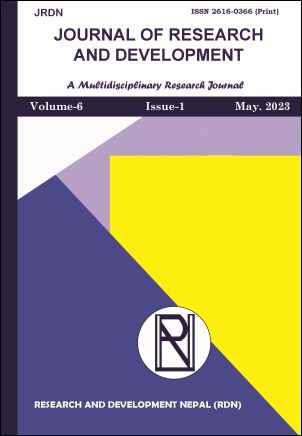Ethogram and Time Budgeting of Rhesus Monkey Macaca mulatta (Zimmermann, 1789) in Ramdhuni Forest, Nepal
DOI:
https://doi.org/10.3126/jrdn.v6i01.55238Keywords:
foraging, grooming, roof, season, treeAbstract
Ethogram provides a list of behaviours a species exhibits together with explanations of each activity in the form of descriptive words and phrases. With the objective to explore the time budgeting of the major behaviours of rhesus monkey the study was conducted from September 2022 to February 2023 by following scan sampling method in Ramdhuni forest, Sunsari,Koshi province Nepal. A total of 750 events were recorded in field working time 300 hours. The time allocated was documented as for foraging (26.67%), locomotion (18.93%), inactive (30.26%), grooming (20.67%) and fighting (3.46%). There was not significant association in gender regarding with the activities (Chi square=0.97, degree of freedom= 4, at significance level 0.05 and tabulated value= 9.49). There was a close relation between the activities in morning and day time (r= 0.80906). Likewise, there was a significant relation between time budgeting for activities with the place for activities (Chi square=78.74, degree of freedom= 20, significance level =0.05 Chi square tabulated= 31.41). Most of the activities were recorded on floor and roof of buildings and temples. There was not association between the allocated time for different activities with the change of season (Chi square= 0.9, degree of freedom=4, significance level= 0.05 and chi square tabulated=9.49). It can be recommended that to manage the monkey and reduce probable conflict between human and monkey, pilgrims should be restricted only in forest sides, not in temple premises to provide foods to monkeys.




